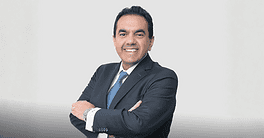Gent Sejko, governor of the Bank of Albania, discusses the country’s economic transformation.
Global Finance: In your 10 years as governor, Albania’s economic outlook has transformed. What role has the Bank of Albania played?
Gent Sejko: Albania has experienced remarkable economic growth, prosperity and macroeconomic stability over the past decade. Our overall GDP has grown by a cumulative 38%; the average real income per capita, in PPS terms, has increased by 54%, while unemployment stands at a post-transition low of 8.7%. CPI inflation has averaged around 2.6%, while external and public debt have shrunk. This performance is even more remarkable when considering the breadth of challenges we have faced. The Bank of Albania (BoA) has played a pivotal role in this success.
First, our consistent and coordinated approach to monetary policy that is based on a modern inflation-targeting framework and a flexible exchange rate regime, banking sector regulation, and macroprudential policies has delivered a stable environment.
Second, we have implemented structural reforms aimed at improving the overall credit environment and strengthening the resilience, efficiency and competitiveness of the banking sector. This has enabled our banking sector to serve as a shock absorber for domestic and external shocks, while maintaining an uninterrupted flow of credit.
Third, we have invested in upgrading our payment system and enhancing the financial education of the Albanian public, with tangible benefits for the financial efficiency of the private sector.
All in all, a key metric of our success is the growing trust that the public places in our institution, the value of our national currency and the soundness of our financial system.
GF: What are the biggest challenges BoA faced over that period, and what are today’s main issues?
Sejko: The key challenge has been to manage frequent and unprecedented policy challenges without losing sight of our structural reform agenda and the need to invest in internal capacity building. We have been broadly successful in this endeavor.
On the policy side, the shocks and the rapidly changing external landscape have required constant attention, prudent and consistent policy responses, as well as careful and targeted policy communication. I’m encouraged to note this process has been greatly facilitated by our strong internal analytical and policy-implementation capacities.
Our structural reform agenda is grounded in the process of EU integration, as well as our commitment to adopting best international practices and standards. We have also benefited from the invaluable resources and expertise of international partners, including the IMF, the World Bank, and other partners, as well as from careful coordination with other institutional partners within the country.
GF: Total GDP reached $25 billion last year, and the goal is to reach $30 billion by 2030. How realistic is this, and where can this growth come from?
Sejko: This goal is ambitious and achievable.
Albania has momentum, anchored on solid private sector balance sheets, a stable economic and financial environment, robust labor markets, positive business and consumer confidence, as well as growing tourism. We project the economy will continue to experience robust and sustained growth, reinforced by the rapidly progressing process of European integration.
At the same time, we remain aware of the complex challenges we face. Externally, these challenges stem from growing international barriers to trade, the reconfiguration of global supply chains, and the rapidly evolving financial innovation landscape. Internally, they take the form of unfavorable demographic trends, the impact of climate change, as well as the need to gradually reorient our domestic growth model towards a productivity-driven one.
However, our positive track record in terms of structural reforms, the stability-oriented architecture of the policy-making institutions, and the remarkable flexibility shown by our private sector agents make me optimistic about our prospects.
GF: BoA takes bank regulation very seriously. Non-performing loans (NPLs), for example, have dropped to 4% from over 24% in 2013. How did you manage this?
Sejko: The rise in NPLs in 2013-2014 highlighted the urgent need to address weaknesses in financial institutions’ loan underwriting and collection, as well as legal uncertainties related to creditor rights and collateral management. Addressing these issues required an inter-institutional approach and close communication with other public and private stakeholders, including banks. The average NPL ratio has been falling steadily, reflecting declining absolute values of NPLs and the positive contribution coming from economic growth.




